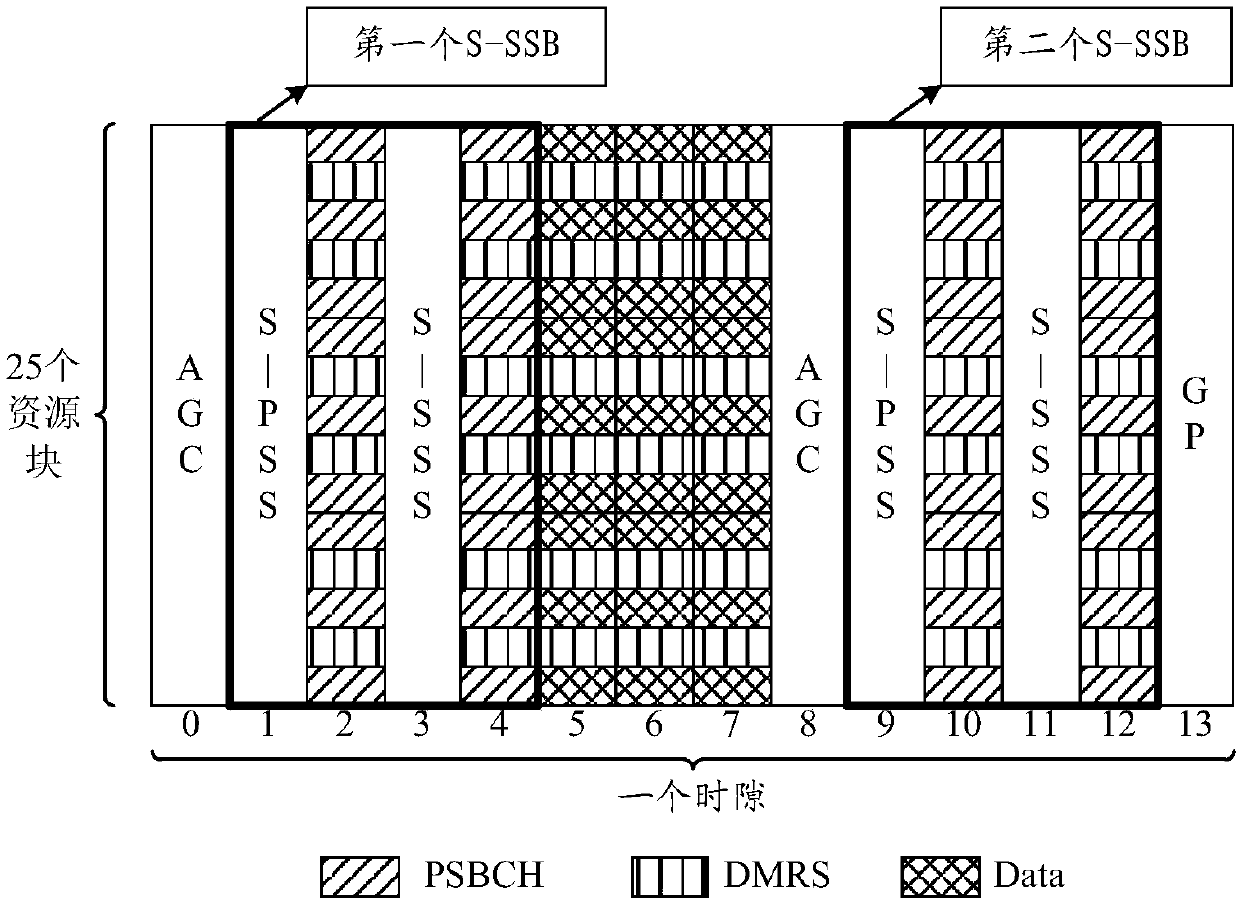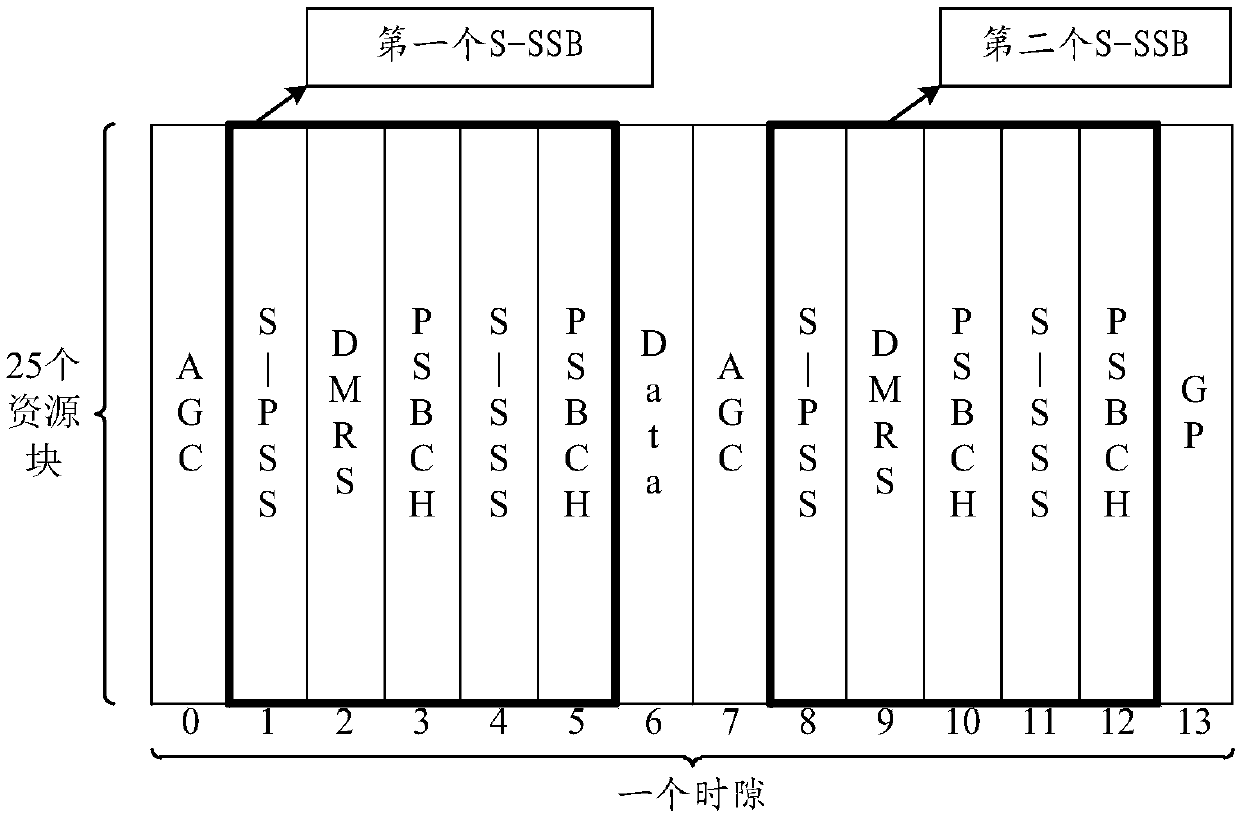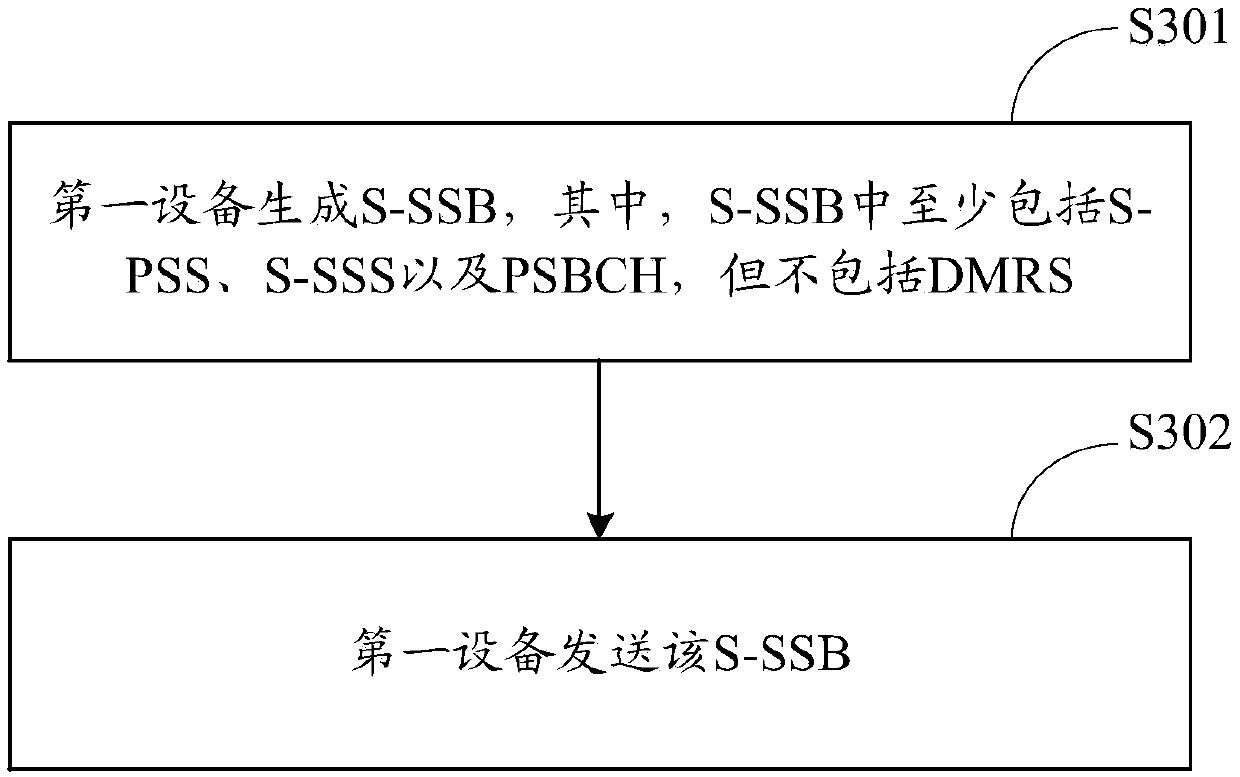Synchronous broadcast information sending method and device and synchronous broadcast information detection method and device
A technology for synchronous broadcasting and information transmission, which is applied in the field of communication and can solve problems such as complexity
- Summary
- Abstract
- Description
- Claims
- Application Information
AI Technical Summary
Problems solved by technology
Method used
Image
Examples
Embodiment 1
[0081] Embodiment 1: see Figure 5 , is a schematic diagram of the distribution of the next time slot of the CP-OFDM waveform; as shown in the figure, for the first S-SSB, S-PSS occupies symbol #1, S-SSS occupies symbol #3, PSBCH signal occupies symbol #2 and #4; For the second S-SSB, the S-PSS occupies symbol #9, the S-SSS occupies symbol #11, and the PSBCH signal occupies symbols #10 and #12.
[0082] Symbols #5 to #7 are data transmission areas. If the data transmission area and the S-SSB located in front of the data transmission area belong to the same user receiving, then the symbol #5 does not need to be used for AGC training, such as Figure 5 As shown; if the data transmission area and the S-SSB located in front of the data transmission area belong to different terminals to receive, symbol #5 needs to be AGC trained, and symbol #5 may be deleted to perform rate re-matching. The distribution diagram of the gap is shown in the Figure 6 shown.
[0083] The above S-SSB...
Embodiment 2
[0085] Example 2: see Figure 8 , is a schematic diagram of the distribution of the next time slot of the DFT-s-OFDM waveform; as shown in the figure, for the first S-SSB, S-PSS occupies symbol #1, S-SSS occupies symbol #3, and PSBCH signal occupies symbol # 2 and #4; for the second S-SSB, S-PSS occupies symbol #9, S-SSS occupies symbol #11, PSBCH signal occupies symbols #10 and #12.
[0086] Symbols #5 to #7 are data transmission areas. If the data transmission area and the S-SSB located in front of the data transmission area belong to the same user receiving, then the symbol #5 does not need to be used for AGC training, such as Figure 8 As shown; if the data transmission area and the S-SSB located in front of the data transmission area belong to different terminals to receive, symbol #5 needs to be AGC trained, and symbol #5 may be deleted to perform rate re-matching. The distribution diagram of the gap is shown in the Figure 9 shown.
[0087] The above S-SSB may also i...
Embodiment 3
[0088] Embodiment 3: see Figure 10 , is a schematic diagram of the distribution of the next time slot of the CP-OFDM waveform; #3; For the second S-SSB, the S-PSS occupies symbol #12, the S-SSS occupies symbol #10, and the PSBCH signal occupies symbols #9 and #11.
[0089] Symbols #5 to #7 are data transmission areas. If the data transmission area and the S-SSB located in front of the data transmission area belong to the same user receiving, then the symbol #5 does not need to be used for AGC training, such as Figure 10 As shown; if the data transmission area and the S-SSB located in front of the data transmission area belong to different terminals to receive, symbol #5 needs to perform AGC training, and symbol #5 may be knocked out, so as to perform rate re-matching. Schematic diagram of the distribution of data transmission areas in Figure 6 Consistent, no more details here.
[0090] In this embodiment, the symbols occupied by the PSBCH signal in the S-SSB under the CP...
PUM
 Login to View More
Login to View More Abstract
Description
Claims
Application Information
 Login to View More
Login to View More - R&D
- Intellectual Property
- Life Sciences
- Materials
- Tech Scout
- Unparalleled Data Quality
- Higher Quality Content
- 60% Fewer Hallucinations
Browse by: Latest US Patents, China's latest patents, Technical Efficacy Thesaurus, Application Domain, Technology Topic, Popular Technical Reports.
© 2025 PatSnap. All rights reserved.Legal|Privacy policy|Modern Slavery Act Transparency Statement|Sitemap|About US| Contact US: help@patsnap.com



